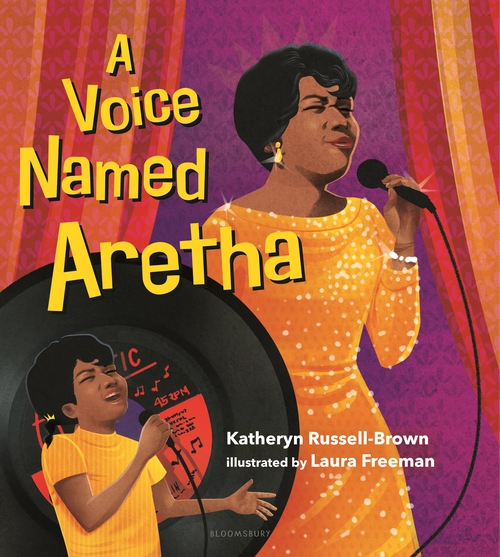What’s great about A Voice Named Aretha is that most people will discover something new about the Queen of Soul from reading this book. Aretha is Aretha Franklin and A Voice Named Aretha is an illustrated book that’s about the talent that she was. One thing that this children’s illustrated book taught me was that her home often had luminaries in music and civil rights popping by to visit. Her father was a preacher in Detroit and it wasn’t uncommon for Duke Ellington, Nat King Cole, Ella Fitzgerald, Dinah Washington or Dr. Martin Luther King Jr. to stop in, as you do.

Growing up she had her share of struggles. Her parents got divorced when she was in early elementary school and her mother died when she was only 10. It was shortly after that when Aretha really found her calling. She’d been signing in the church for years with her brothers and sisters. Everyone knew that she had a gift, but it wasn’t until she did her first solo in church when that gift was able to take off.
It was just after her mother’s death. There were more than a thousand people in church that day, but she delivered that song like a seasoned professional. It must’ve been amazing to be in that crowd and realize what you’ve just heard. From there she continued to grow until turning 18 when she moved to New York City and promptly landed a record deal.
This was the 1960s and Aretha played the game differently than other performers. For example, she only played clubs where people of all races could attend. She was also business savvy enough to demand that she get paid before the show and in cash. Aretha had heard tales of singers and performers getting ripped off or not being paid after the show.
The illustrations by Laura Freeman are realistic and help drive home the points that the text by Katheryn Russell-Brown establish. Sometimes the mood is serious, many times thoughtful and very poignant. The text and the illustrations complement each other like a healthy marriage on date night.
The text in the book might be challenging for younger readers to navigate without any assistance. Second graders should be able to read the book with only a couple words tripping them up. Older readers will wish that A Voice Named Aretha were longer. Ideally, it’s a great fit for younger readers as a read-along book. This way they’ll have help with those words and be able to explain the background behind some of the times. This book is geared towards those in the lower half of elementary school and those kids in third or fourth grade have a couple of books on Aretha Franklin that are more detailed. For those kids who want to learn about a legend this is a great starting point.
There are affiliate links in this post, because I can’t sing very well.




 Facebook
Facebook Twitter
Twitter Flickr
Flickr GooglePlus
GooglePlus Youtube
Youtube